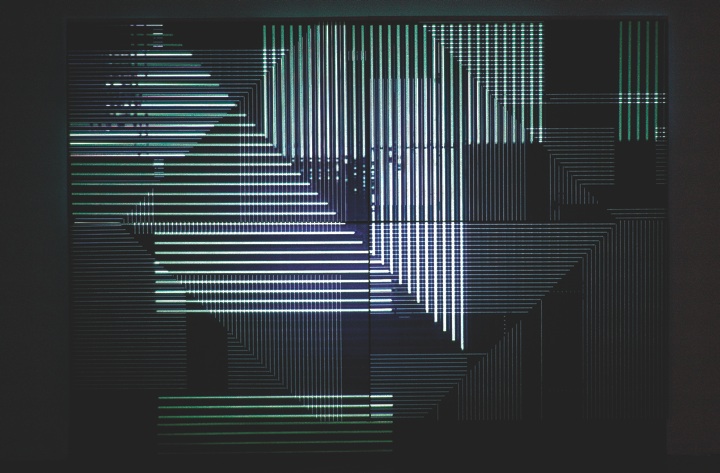Featuring the artworks of Richard Garet, Robert Henke, Emma Mcnally, David Linton, Phoenix Perry, Bethany Shorb
- February 10th – March 29th
- Opening Reception March 5:
- VISIT http://cdact.stonybrook.edu/
fglitch/ FOR THE FULL SCHEDULE OF EVENTS
4:00 Keynote Speaker: Carl Haber, Physicist: “Seeing Voices: Optical Scanning Applied to Early Recorded Sound Preservation” (More Details)
5:00 Seth Horowitz, Neuroscientist: Data in the Wild: From Basic Biology to the Real World
5:30 Ann Warde, Bio-Acoustician: “Erasing the Glitch” (More Details)
6:00 Opening Reception for Art Exhibit at Simons Center, Simons Center Lobby
Noise. Error. Glitch. The ideal held up for digital technology is frictionless functionality. But systems have bugs, communication is riddled with distortion and channels are often noisy. Error is not a rare occurrence, but a given. Glitch, broadly defined, introduces unintentional events, artifacts, and interruptions. It can be visual or sonic; it can be imperceptible at ordinary levels or cause sensory overload. There are glitches in programming, in communication, in architecture and infrastructure. But these errors can be illuminating, creative and productive. Glitch can make our systems stronger and more robust. Distortion can be aesthetically vibrant and revealing. Glitch reminds us that noise can be something to be embraced rather than eradicated and that the unexpected is often unexpectedly useful. Glitches are a glimpse into the hidden world of technology, exposing the seams in our digital infrastructure.
(f) glitch, or the function of glitch, is the fourth in a series of events produced by cDACT that interrogate central concepts of digital culture—sound, space, data, and now error and noise. In addition to the gallery exhibit, there will be lectures, concerts, and theatrical performances. Please visit http://cdact.stonybrook.edu/


